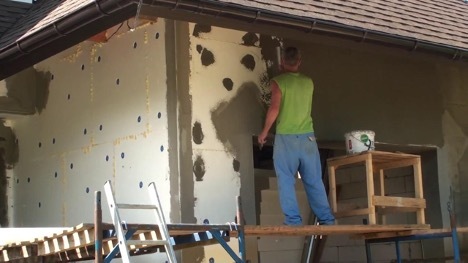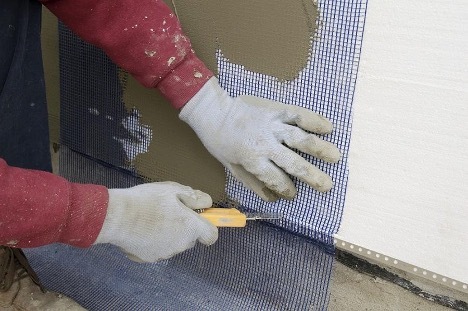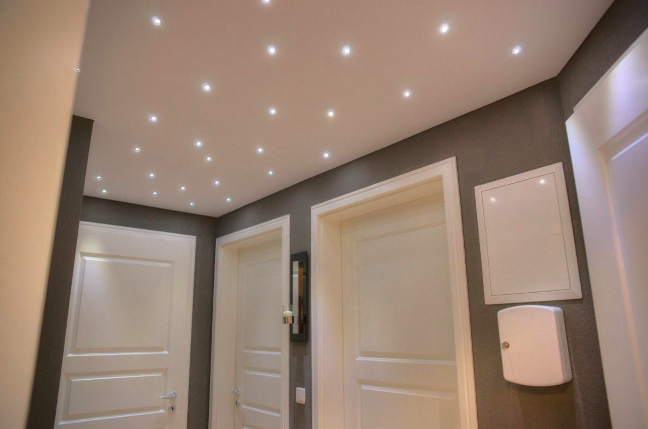Foam reinforcement is a process that significantly increases the strength and durability of this material. Polystyrene foam, due to its thermal insulation properties, is widely used in construction, especially for insulating facades. However, given its relative fragility and susceptibility to mechanical damage, there is a need to strengthen it. Reinforcement not only increases the strength of the foam, but also improves its adhesion to finishing materials such as plaster.

The content of the article
-
How to strengthen polystyrene foam: selection of materials
- Market leaders
- The process of reinforcing polystyrene foam with mesh: a step-by-step guide
- Mistakes when performing work and how to avoid them
- Final stage: additional strengthening measures
How to strengthen polystyrene foam: selection of materials
To successfully reinforce polystyrene foam, it is important to choose the right materials. Basically, specialized glue for reinforcing foam and reinforcing mesh are used. The glue provides reliable adhesion between the foam and the mesh, and also protects against moisture and ultraviolet radiation. Reinforcing mesh, usually made of fiberglass, provides additional strength and prevents cracking.
Important points when choosing:
- glue for foam reinforcement must be elastic and resistant to external influences;
- the mesh should have a fine mesh for better adhesion and load distribution.
Market leaders
There are several manufacturers in Russia that produce materials necessary for foam reinforcement. For glue used in the reinforcement process, popular brands include Ceresit, Tytan, Knauf, Starateli, and Technonikol. As for the reinforcing mesh, such Russian manufacturers as OJSC Novgorod Fiberglass Plant and OJSC Sudogodskie Plastics are known.
These companies offer a variety of products suitable for strengthening foam, which is important for increasing its strength and durability, especially when used in construction and façade finishing. Selecting quality materials from trusted manufacturers will ensure reliability and efficiency when carrying out foam reinforcement work.
The process of reinforcing polystyrene foam with mesh: a step-by-step guide
Have you decided to reinforce the foam yourself? Here are step-by-step instructions for reinforcing polystyrene foam with mesh with your own hands:
- Prepare the surface of the foam, make sure it is clean and dry.
- Apply a thin layer of foam reinforcement mixture.
- Carefully apply the mesh, distributing it evenly over the entire surface.
- Cover the mesh with another layer of reinforcing mixture, paying attention to the quality of the coating.

Mistakes when performing work and how to avoid them
When reinforcing foam, it is important to avoid common mistakes to ensure the quality and durability of the final result. Below are some of the most common mistakes and tips on how to prevent them.
One of the main mistakes is using inappropriate materials. It is necessary to ensure that the foam reinforcement adhesive and mesh meet the required specifications. The wrong choice can lead to weak adhesion of the mesh to the foam or to its destruction under the influence of external factors.
It is necessary to ensure uniform application of the foam reinforcement mixture. Uneven coating can lead to the formation of voids and weak spots, which will reduce the strength of the reinforced coating. Use a spatula to spread the mixture evenly over the entire surface.
When reinforcing foam with mesh, it is important to position the mesh correctly. It should completely cover the surface to be treated without excessive tension or folds. Incorrect placement of the mesh can lead to cracks in the future.
Rushing the drying process is another common mistake. Enough time should be allowed for each layer to dry completely before applying the next. This will ensure strong and durable adhesion of the materials.
By avoiding these mistakes, you will significantly improve the quality and reliability of reinforced foam, which is especially important when using it for insulation and finishing of facades.
Final stage: additional strengthening measures
After you have reinforced the foam with mesh, you should pay attention to additional strengthening measures. This may include applying protective coatings such as primer and stucco to improve the foam's texture and appearance. It is also recommended to allow enough time for the reinforcing layer to dry completely before carrying out further work.
Thus, with the help of reinforcement, the quality and durability of polystyrene foam can be significantly improved, making it more suitable for use in construction, especially for insulating facades.


